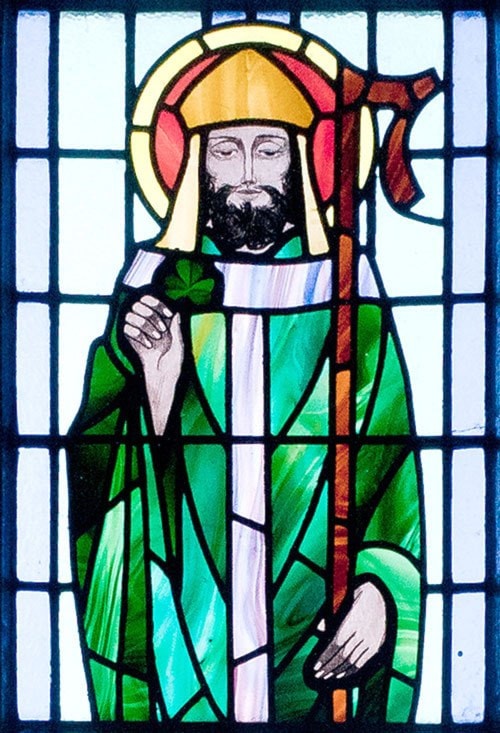Few saints are as well-known and widely celebrated as St. Patrick. Known as the patron saint of Ireland, St. Patrick annually inspires people from around the world to pay homage to his legend, which includes bringing Christianity to Ireland. Revelers don green clothing, participate in parades and decorate with shamrocks and symbols of Irish folklore.
Much of what is known about St. Patrick is shrouded in mystery and legend. Patrick has been credited with many miracles, including converting an entire country to Christianity from paganism, and also participated in many spiritual resurrections.
While neither Patrick’s birth nor death dates are known with certainty, it is believed he was born in 373 A.D. in an area of Roman Britain, which is now Scotland. Patrick was not Irish, but a British Celt.
Young Patrick was careless and not as spiritual as he eventually became. At 16, Patrick was captured by a band of pirates and was sold to a chieftain in an area of Northern Ireland. His labor included tending flocks of sheep. It was during his time of captivity that Patrick found God and decided to devote his life to professing the faith and grace of Christ. He acquired the Irish dialect of the Celtic language in captivity, which would prove essential in his future work.
After six years of captivity, Patrick escaped and returned to his homeland, where he immersed himself in the scriptures and fully committed to Celtic Christianity, not the Roman Catholicism that became dominant throughout the Roman Empire.
He spent years studying and preparing for life as a missionary. Through historical documents written in his own hand, Patrick says he was “called to be a servant in Christ to a foreign land.” He began evangelizing, but it wasn’t until around his 30th birthday in 405 A.D. that Patrick set out for Ireland.
Patrick established schools and monasteries in Ireland because he believed education and faith were closely entwined. He taught many people, including his most famous student, Columba.
While St. Patrick is credited with many miracles, such as driving snakes out of Ireland, some historians believe these tall tales were just metaphors for pushing out paganism. Other miracles included feeding starving sailors with a herd of pigs that appeared when the sailors had faith in God. Some legends even suggest St. Patrick brought animals and people back to life.
Many also associate St. Patrick with the shamrock. By using a three-leaf clover, St. Patrick was able to convey the concept of the Holy Trinity to a land of people familiar with the shamrock symbol.
The supposed day of St. Patrick’s death, March 17th, was officially recognized as St. Patrick’s Day. In reality, St. Patrick was never officially canonized a saint by the Catholic Church and received the title in name only. At the time of his death, there was no official process for canonization, but Patrick was given the title by popular acclaim and likely with the approval of a bishop.
St. Patrick is widely acclaimed and celebrated throughout the world, and his life is even more interesting than many of the legends associated with his name.
~ Metro Creative article
